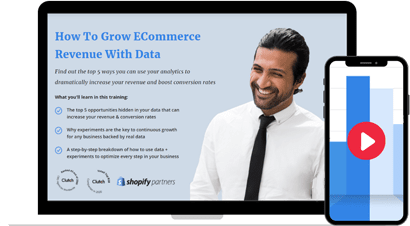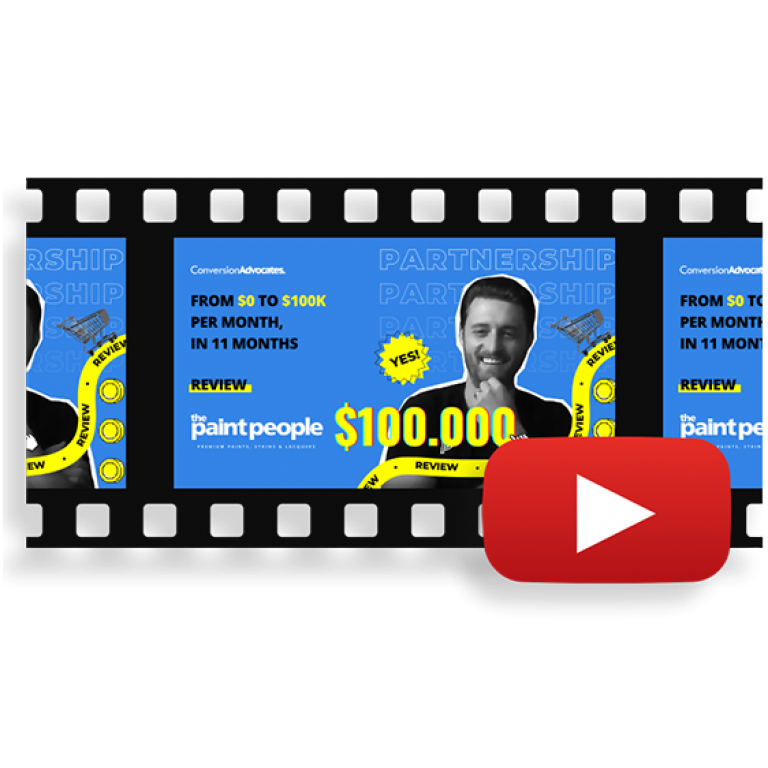a 9-minute read
Sometimes, leads feel like these strange, mysterious creatures.
- What do they want?
- How can we get them on board?
- What’s their secret weakness?
In all this frustration, we forget not only that MQL (marketing qualified lead) is a lead who has indicated an interest in what a brand has to offer based on marketing efforts, but we also forget a very basic fact:
Leads are people, just like us.
They ignore ads and a carefully tailored lead magnets for the same reasons we all do.
They say “no” for the same reasons you do.
And, perhaps the most important similarity, all leads change their minds at one point or another.
Because of this last similarity, it is your sacred job to make sure they change their minds for you, and not for a competitor.
But, how do you do it?
We know that it can be nerve-racking to see your lead generation miserably fail or PPC campaign hitting a new all-time-highest cost after all those hours you’ve put into the planning process.
So, we decided to create a list of the six most common reasons why your online leads arent’ converting. And don’t worry – we didn’t list only the reasons, but the solutions as well! This way you’ll be able to increase lead conversion in no time:

- Your leads don’t know, trust or like you
- You’re coming on way too strong
- We are all trained to say “NO” to strangers
- You are not giving them the right facts to change their mind
- You’re not giving them enough opportunities to change their mind
- You are not giving them what they want
#1 | Your Leads Don’t Know, Trust, or Like You
We’re not trying to hurt your feelings, so we’ll paint a picture for you.
Imagine you’re walking down the street, listening to your favourite music, sipping on freshly brewed take-away coffee. You’re in your little universe, and then, out of nowhere, a person dressed up in violently colourful clothes jumps out of the bushes, yelling how they’re going to make your dreams come true while dragging you towards the bushes.
Scary, right?
You don’t know this crazy person, so how could you trust it? And all this yelling is definitely not going to make you like it.
While this is highly improbable to happen in the real world, this is how most (poorly planned) marketing efforts work in the digital world. And this is why so many outbound leads (leads developed through proactive, direct contact initiated by you [ads or cold outreach]) fail to convert.
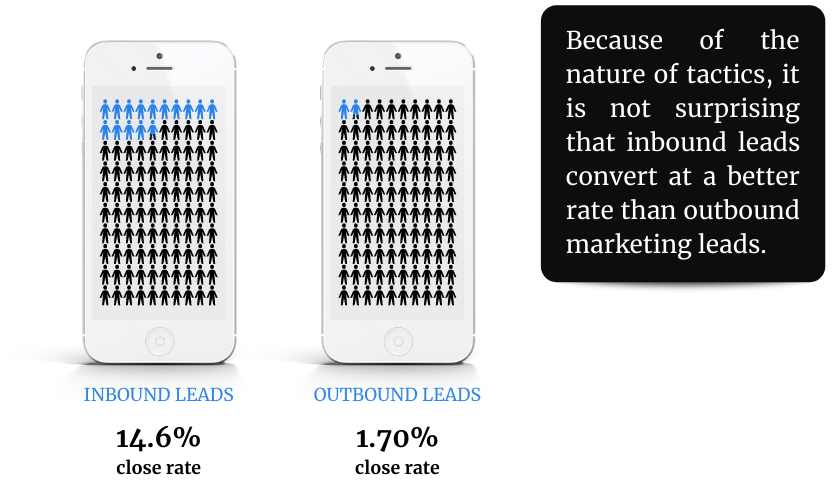
If you’re trying to reach your target audience with ads or cold outreach campaigns and get those leads flowing down your marketing funnel, you’ll want to give them something extremely valuable – without an obvious catch.
At this stage, you’ll want to give them a free ebook or access to video training at a symbolic price that will educate them and offer solutions to their burning problem. Yes, this will be a lead magnet, but it won’t aggressively promote you and your services.
This will present you with an opportunity to include them in a lead nurturing campaign where you’ll have a chance to bond with them on a deeper level and convert them at the right moment.
#2 | You’re Coming on Way Too Strong
When we’re discussing this, it doesn’t matter if we’re talking about inbound or outbound leads:
Rushing leads to buy from you makes them feel under pressure.
And the only thing worse than a screaming clown popping out of nowhere is when a person you’ve put your trust in turns into this creepy guy.
Once this trust is lost – there’s no going back.
It’s because leads are like antelopes – they get scared easily.
So if you want them to take the desired action sooner rather than later, don’t blast one message after another into their inbox, loudly proclaiming the urgency of visiting a sales page.
Now you’re probably thinking about that more “gentle” approach, but there’s a catch with that one as well.
Even if you compose it in a very sophisticated way, most people will still see what you’re doing because we’re all exposed to sales tactics like this every day.
By this point, we all know the game.
Tactics like this leave the person feeling like they’re being tricked and you’ll agree that this is not the best start for a long-term, valuable business relationship.
The key is to focus on building a relationship and developing backend tactics (like behavioural emails and tracking user behaviour on the website) that will help you collect data necessary to detect if a lead is ready to be labelled as a prospect (potential customer). The same goes for tracking prospect’s behaviour and seizing the sales opportunity at the right moment!
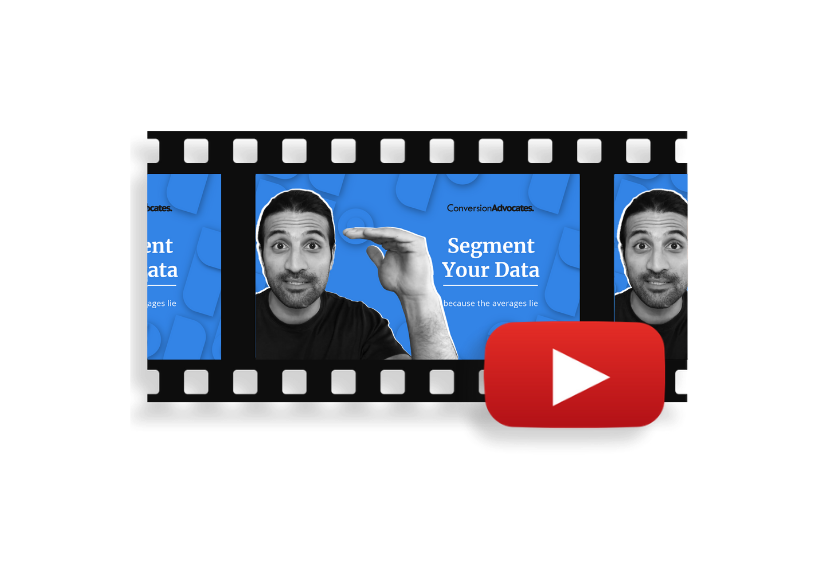
The Importance Of Data Segmentation
Capturing the data is just one part of the equation. Segmenting and analyzing is what will help you convert your leads at the right moment.
#3 | We’re All Trained to Say “No” to Strangers
From the time we first learn to walk and talk, we’re told again and again to always say “no” to strangers. Especially ones who offer us gifts out of the blue.
It’s in our nature to be suspicious – and that’s a good thing!
If your customer says “no” to strangers, that means they’re smart and are critically thinking about your offer.
But, this doesn’t mean we don’t buy things from strangers. In fact, we do this every day!
Every time you go to the grocery store, you’re handing over money to a total stranger. Although – is that really true? Let’s dive deeper.
You’ve been to that grocery store (or one like it) many times before. You know what chains sell the food you like, what brands you prefer to buy from. You might even recognize some of the cashiers’ faces, even if you don’t know their names. In other words, you know some basic facts that make you more willing to hand over your money to this particular stranger at this particular time and in this particular place.
That’s exactly what your leads want too.
So the trick is to provide them with as many trust elements as possible.

27 Landing Page Optimization Tips That Will Help You Boost Conversion Rates
Wondering what are trust elements? You can find everything you want about them in our landing page optimization checklist.
#4 | You’re Not Giving Them the Fact(s) to Change Their Minds
This is something we need to underline:
If a lead gave you their email address – it means they are interested in what you have to say or offer.
Don’t abuse and do not lose this opportunity!
But, how?
Give them some nuggets.
No, not the chicken ones, but the ones of convincing information, aka response indicators.
Response indicators – the specific action, or piece of knowledge, that just about guarantees a customer will respond.
Say you’re selling a video course. You might discover if you’ve got good analytics, that 60% of the leads who request access to your free training go on to seek more information about your course. That’s a solid response indicator.
If you’re using advanced analytics methods, you might go on to discover that a huge 90% of the leads who access your free training video and watch 100% of it end up buying your course. Now that is a fantastic response indicator.
So you see, your goal is not to push your leads to buy.
Your goal is to move them from one response indicator to the next and collect data that will help you tailor the sales funnel to their needs. This will then make it possible for you to pinpoint the perfect moment to qualify your lead as one ready to be sent to your sales team.
#5 | You’re Not Giving Them Enough Opportunities to Change Their Mind
Somewhere along this chain of response indicators, you might start to see a pattern forming.
Change and fresh ideas are key for improving lead conversion rate.
The vast majority of your customers will be people who said “no” the first few times they saw your offer but finally came around because they were impressed with your consistency, value and support you provided.
The more chances you give them to change their mind, the more sales you’ll make. We call this multiple conversion points.
A lot of campaigns have just one conversion point, repeated multiple times.
There’s a big difference here.
If you’re sending a whole lead nurturing series of emails that all make the same offer in the same way, that’s still only one conversion point.
Your conversions will go through the roof when you make a range of seemingly different offers at various points in your buyer’s journey.
You can use response indicators to work out where these conversion points should be along your customer journey.
Let’s go back to our video course/free training example from before.
You’re trying to sell a video course, but you’re hardly getting any conversions from your carefully crafted lead nurturing campaigns.
You have your amazing analytics set up, you know the data, but – how do you translate it in into actionable intelligence?
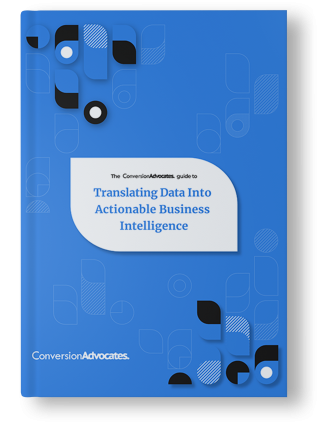
Translating Data Into Business Intelligence
Data is a critical corporate asset allowing businesses make decisions faster, more accurate, more consistent, and more transparent. So we decided to create this guide to help you!
Here are some things you could do:
- Make sure to present the offer for the course as soon as a lead lands on the thank you page after requesting access to your free training. You’ll want to try to catch some of that 60% as soon as possible (but not aggressively).
- Then make sure the offer, phrased differently, of course, pops out now and then, and gets mentioned inside your free video, where the rest of the 60% of your leads will be thinking expanding their knowledge.
- Make absolutely sure to clearly underline the main offer at the end of the video, where 90% of your leads are primed and ready to buy.
This way you won’t send your leads the same offer again and again, hoping they’ll magically change their mind.
Instead, you’ll show them variations of the offer at different POINTS in their journey. Giving them these opportunities to change their mind, at the exact moments when this change is most likely to happen, makes them far more likely to decide in your favour.
# 6 | You’re Not Giving Them What They Actually Want
This doesn’t mean your product isn’t of value to your leads, or that you’ve got bad sales leads in the pipeline (though you might have unqualified leads – so look for them, and pay extra attention to them).
What this could mean is that you’ve fallen into a trap of oversimplifying things:
“My leads are interested in increasing their sales. I made a video course on how to increase sales. Therefore, my leads should want to pay for my course.”
It seems logical on a surface level – but what this translates to is something like:
“My leads want to travel quickly over long distances. Catapults throw things quickly over long distances. Therefore, my leads should want to pay for catapults.”
Your product or service needs to do more than just generally achieve what your leads want to accomplish.
You need to help your leads achieve their goals, and do it in the same way that they want to achieve them.
So, how to you deal with this?
The first step to solving this problem is to dig into your analytics and find out precisely where your leads are dropping out.
- Example A: Your leads are devouring loads of articles on your website, but aren’t subscribing to your email list. This probably means the list doesn’t promise the kind of help they’re looking for and you need to restructure your offer. Or you’re simply not marketing enough the subscribe option.
- Example B: Your leads are downloading your ebook, but not taking action on the offers inside it. That means the ebook’s content itself is not solving their problem, so they’re giving up.
- Example C: They’re downloading the ebook and purchasing the video course, but they demand refunds a few days later. This means your videos are not helping in the way you promised and causing widespread customer dissatisfaction.
Once you’ve found the general source of the problem, the next step is to pinpoint exactly where and why your leads are getting frustrated within that particular step or piece of content.
Maybe your subscribers-only email content is nowhere near as helpful as the free articles on your site.
Perhaps your ebook is too light on specific, actionable tips, and your leads see it only as a bunch of useless fluff.
Maybe your videos are too long and people stop watching them after the first two minutes.
Perhaps, worst of all, you’re promising a specific kind of help, but failing to deliver solutions that actually help your audience solve that problem.
Whatever the case, you need to study your audience’s behaviour until you understand exactly where and why they’re getting fed up with you.
This why content audit backed with data analytics is such an important part of content marketing. It’s goal is not to make you feel bad or cause you to snap at your employees – it’s goal is to help you all find opportunities to optimize your content efforts, adjust them to your leads true needs and problems.
Some Final Thoughts
Attracting leads is very hard – converting them is even worse! And the fact that the tactics, tools and leads are getting more and more sophisticated is not helping.
Your marketing strategy may be on point, you may have amazingly designed visuals paired with top quality copies, but you may still witness your leads not converting.
The good news is that there is an answer, and you’ll find it in your analytics.
If read correctly, data will tell you:
- Exactly where and why you lose them;
- If it’s a problem with landing page, or content itself,
- Or maybe you chose to act on the wrong step of the buying journey.
And these are just the basic things your data will help you uncover!
Yes, we know, data is great! And we’ll be more than happy to share our knowledge and skills with you.

